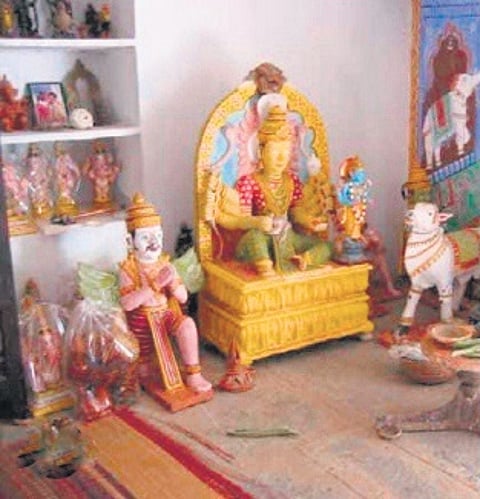

HYDERABAD: One of the most interesting aspects of various art forms and crafts in Telangana is the intricate connection between them. Chandan Bose, in his book, Perspectives on Work, Home, and Identity from Artisans in Telangana talks about how during the colonial period, “the preoccupation with situating objects and practices within spatial ‘pockets’ characterised the inception of historiography of ‘crafts’ in the Indian subcontinent…One of the outcomes of this history of collecting knowledge about craft practices, geographies and communities was that what could be regional spacialisation of a practice got translated as discrete crafts.”
Crafts that we now associate with Nirmal in Adilabad and Cheriyal in Warangal, have a common ground, located in the community of ‘Naqqash’, that migrated from Rajasthan to Telangana. While in Cheriyal, the community members engaged in making scroll paintings, in Nirmal, they made three-dimensional figures.
Post Independence, due to the formation of cooperatives and trusts that aimed at preservation of these crafts, also led to them being pinned down to these respective places. Hence, although having a common origin, the crafts came to be known by their places and found spaces of evolution from within these domains. And that is how Nirmal toys evolved into paintings as well.
Thota Laxminarayana, an artist, says the scroll paintings that were once used as screens for storytellers, in the past few decades have come to be known as Nirmal paintings depicting human figures in bright colours with a dark background.
“We can now see Radha Krishna, ladies and other figures in the paintings,” he said, “however, in the original works, you would never find such figures. The lines, strokes and colour schemes were similar to Cheriyal paintings. The present generation has only painted, sold and bought the version we see now,” he added.
One can see the influences of Indian Schools of Art like Kangra, Ajanta as well as Mughal miniatures in these paintings.
“The origin of Nirmal painting can be traced back to the Kakatiya dynasty during the 14th century. Later Mughal rulers patronised it greatly. When we are talking about patronage, need to mention Lady Hydari of Hyderabad who brought the Nirmal artisans to Hyderabad in the 1950s and promoted this craft, under the Cottage Industries division in the Nizam’s government,” said Dr Jyoti Vani, Assistant Professor, JNAFAU.
Generally depicting scenes from the epics Ramayana and Mahabharata, these paintings in the past few decades have come to showcase graceful dancers, musicians, beautiful nature settings etc, Dr Vani said. “We can see the transition from painting epics to different motifs on customer’s requirement,” she added.